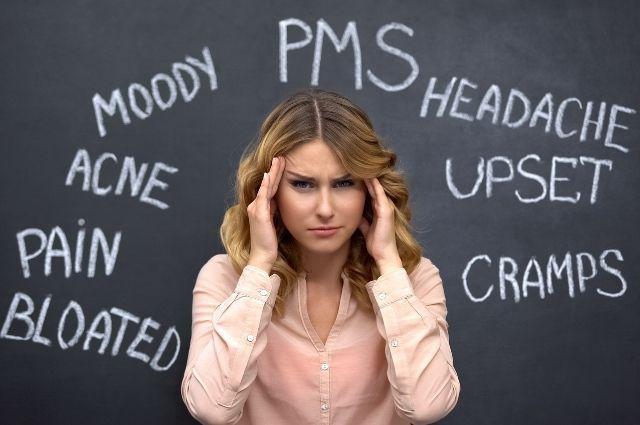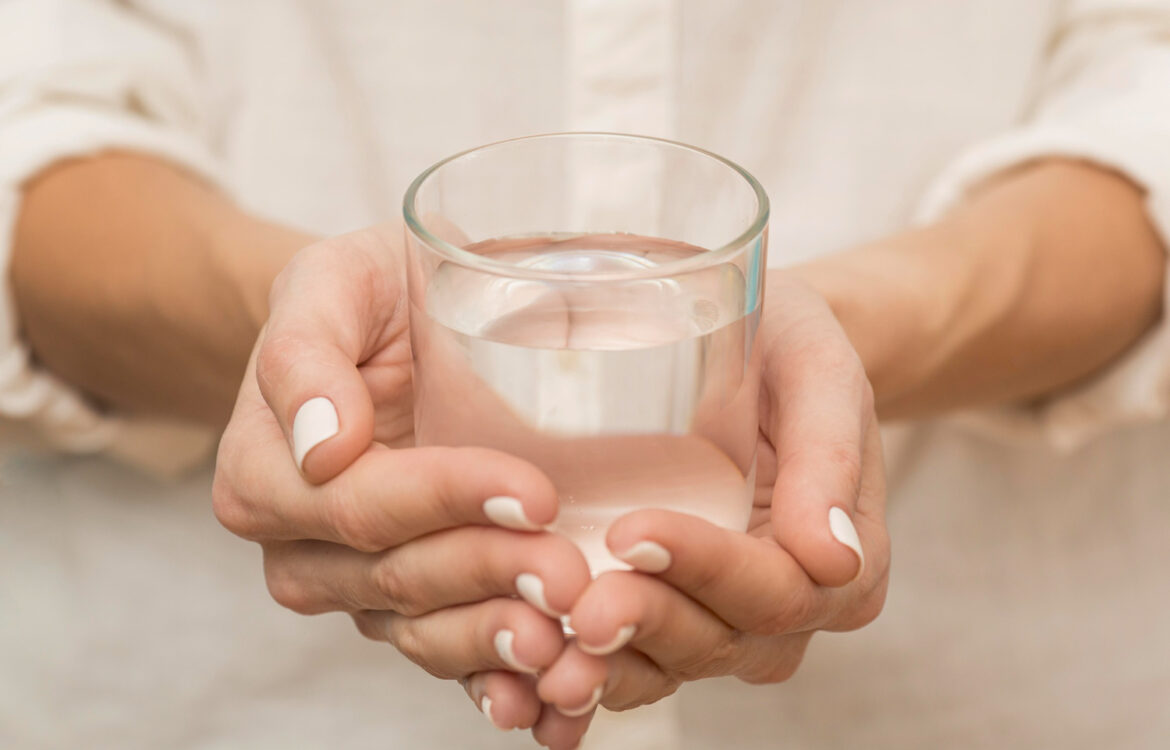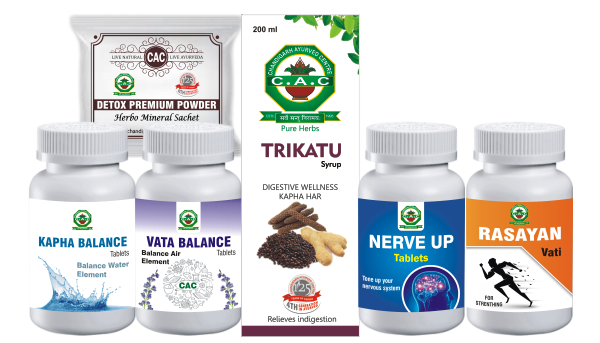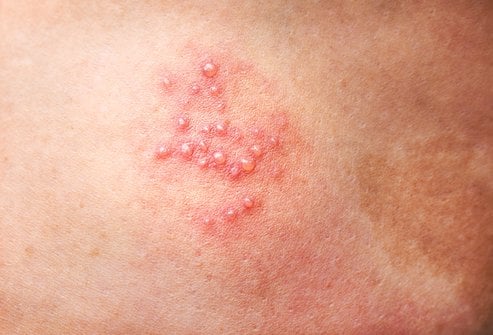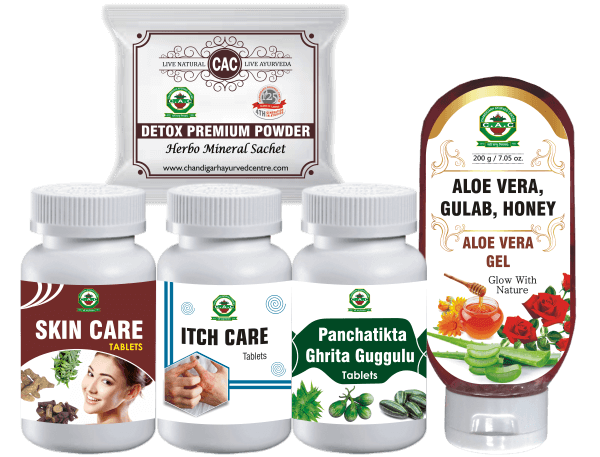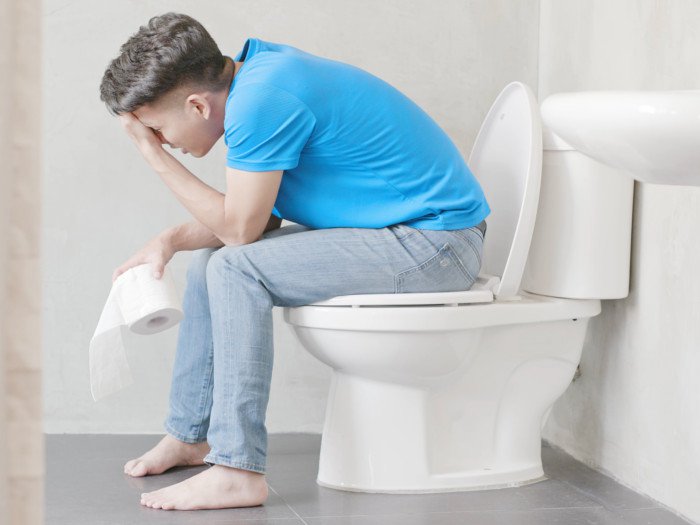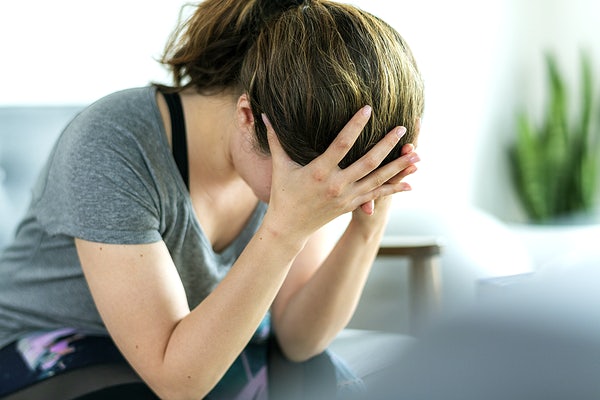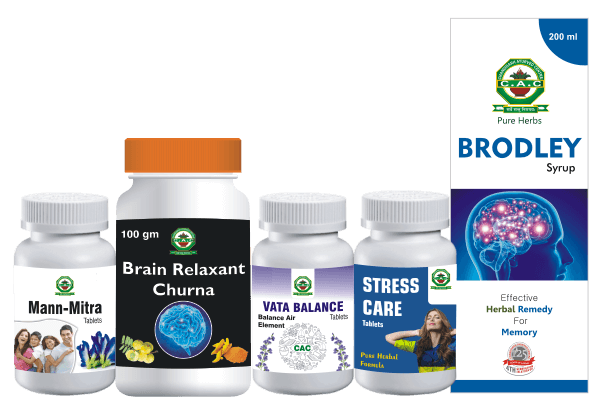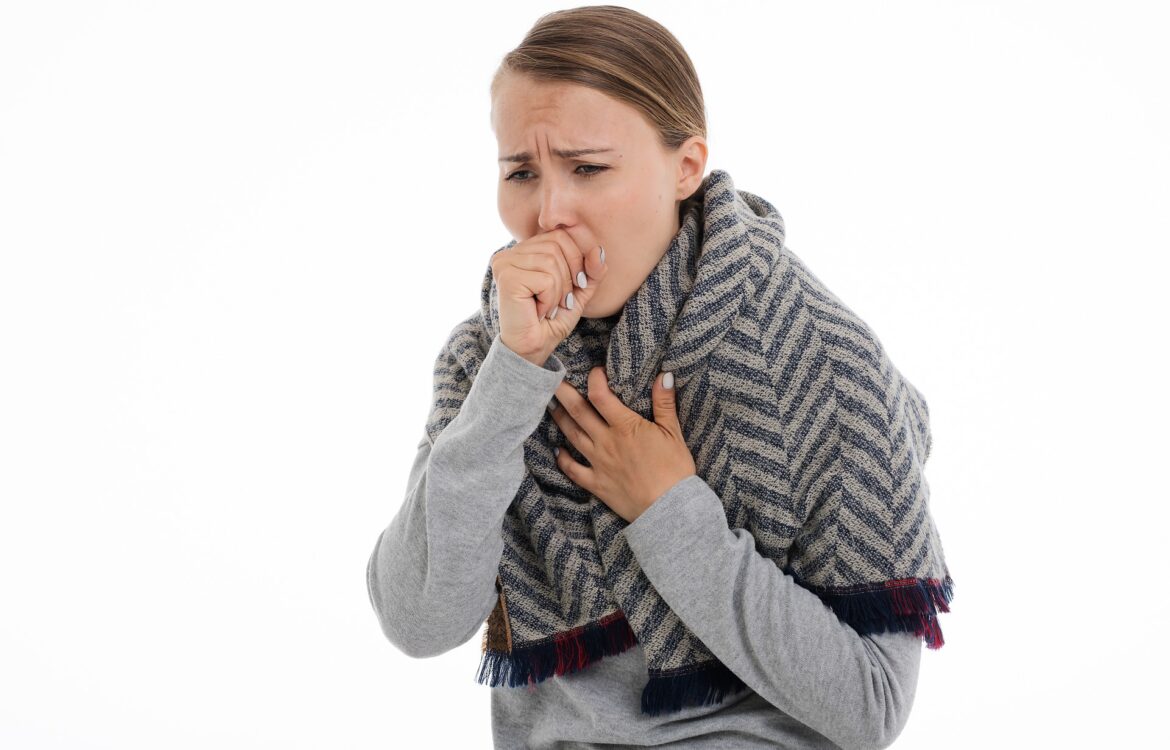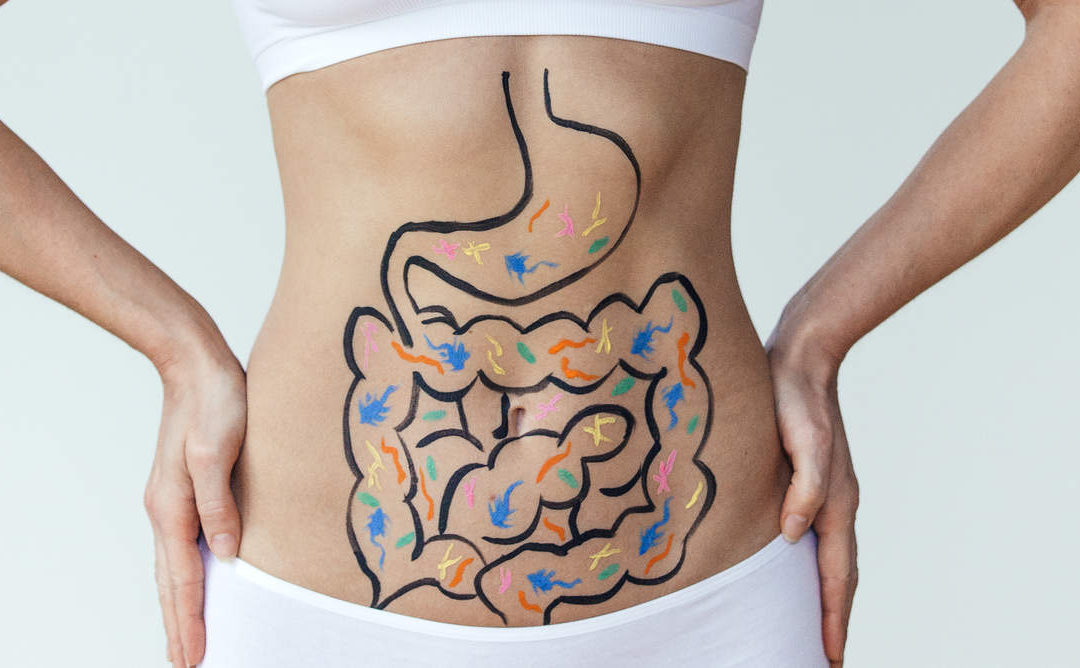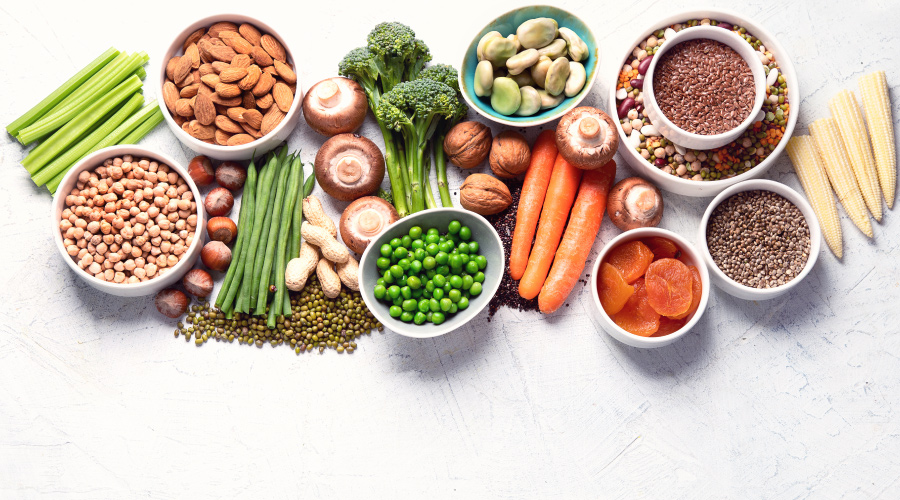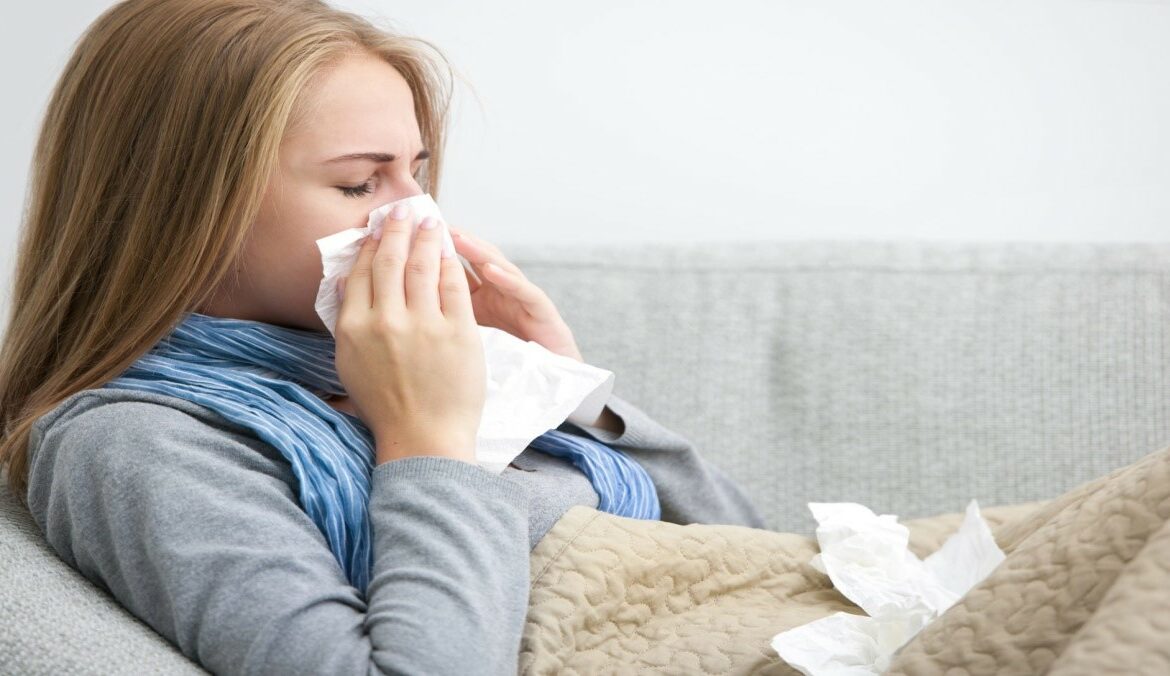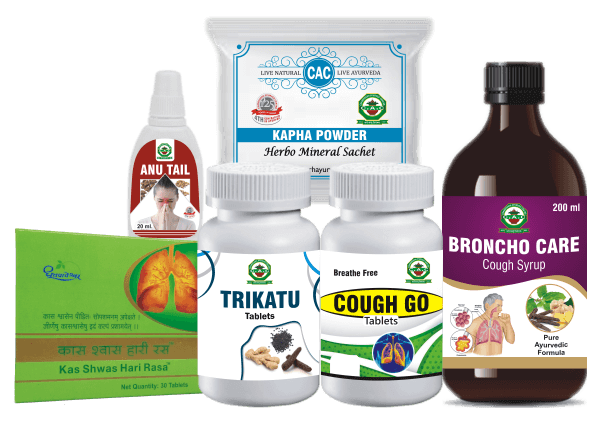Author Archives: Dr. Vaidya Karanvir Singh
HOW HORMONE AFFECT YOUR HEALTH
- February 9, 2023
- Posted by Dr. Vaidya Karanvir Singh
- 0 Comment(s)
WHAT ARE HORMONES?
Hormones are body chemical messengers. They travel in blood stream to tissue or organs . It is essential for life and health . when glands do not produce the right amount of hormones diseases develop and aafect many life aspects of life
HORMONE THAT ARE SECREATED BY ENDOCRINE SYSTEM:
- Hypothalamus : It can control the body temperature , emotions, thirst , sleep moods . It contain several types of neurons responsible for different hormones
- thyrotropin releasing hormone
- Gonadotropin releasing hormone
- Growth hormone
- Corticotrophin releasing hormone
- Somatostatin
- Dopamine
- Pineal: It is also called as thalamus . It produces serotonin derivatives of melatonin which affect sleep patterns .
- Parathyroid: it helps in controlling the calcium present in body.it secreates parathyroid
- Thyroid: It secretes tridothyronine and throxine.this hormone regulates weight, energy levels, internal temperature , metabolism , nail growth.
- Adrenal: It secretes a hormone such as cortisol and aldosterone. Cortisol helps in control your body use of fat, proteins, and carbohydrates.it also suppress inflammation and maintain blood pressure, sleep cycle and blood sugar. Aldosterone maintain pH of blood, level of sodium and potassium .
- Pituitary : It secretes six hormone named as adrenocorticotrophic hormone, throid stimulating hormone, leutinizing hormone, Follicle stimulating hormone, Prolactin, Growth hormone, Melanocyte stimulating hormone. It is also called master control gland .
- Thymus: Thymosin and thymulin helps in production of T cells and keep immune system working properly
- Pancreas : insulin and glucagon hormone are secreted by pancreas .it plays an important role in maintaining blood sugar level.
- Testes: in men testes secretes hormone named as testosterone and it produces a sperm .
- Ovaries: In women ovaries release estrogen and progesterone. It plays an important role in reproductive development and menstruation.
COMMON ENDOCRINE HORMONE DISORDER :
- Menopause
- Diabetes
- Addison’s disease
- Cushing disease
- Hyperthyroidism
- prolactinoma
FUNCTION OF HORMONE:
- Metabolism
- Growth and development
- Controlling thirst and hunger
- Regulating mood and cognitive functioning.
- Promoting cardiovascular health.
WHAT IS HORMONAL IMBALANCE :
A hormonal imbalance happens when you have too much or too little hormones . Hormones are powerful signals if hormones are imbalance they will lead to certain diseases .
CONDITION ARE CAUSED BY HORMONAL IMBALANCE:
- Irregular menstrual periods
- Infertiliy
- Acne
- Diabetes
- Thyroid disease
SYMPTOMS OF HORMONE IMBALANCE THAT AFFECT YOUR METABOLISM:
- Tachycardia
- Constipation
- Diarrhoea
- Numbness or tingling sensation
- Depression
- Anxiety
- Extreme thirst
- Frequent urination
- Weight loss
SYMPTOMS OF IMBALANCE FEMALE HORMONES:
- Acne
- Hair loss
- Heavy periods
- Infertility
- Vaginal dryness and atrophy.
- Night sweats.
- Hot flashes
SYMPTOMS OF IMBALANCE MALE HORMONES:
- Decrease or loss of body hair.
- Erectile dysfunction.
- Infertility
- Gynecomastia
- Loss of muscle mass.
- Poor memory.
CAUSES OF HORMONAL IMBALANCE:
- Unhealthy diet
- Excessive stress.
- Pituitary tumors.
- Extreme infection
- Birth control medication
- Hormonal replacement medication.
- Benign tumors or cyst .
- Anorexia .
- Damage or injury to the glands .
- Autoimmune conditions .
PREVENTION OF HORMONAL IMBALANCE:
- Maintain a healthy weight.
- Eating a balanced ,healthy diet.
- Daily exercise.
- Stress manage.
- Getting enough sleep quality.
- Manage chronic health condition.
- Quitting smoking or tobacco products.
CHANDIGARH AYURVED CENTRE MEDICATION FOR THE TREATMENT OF HORMONAL IMBALANCE:
1. Women power plus tablet:
woman power plus tablet is a complete natural health supplement for women which is best for female health and vital energy. It helps to build up the immunity. This is a pure herbo mineral product of the best quality herbs. It works well in the reproductive system and other health-related disorders. This tablet contains ingredients like Rajah pravarthini vati, Femine care tablet, Shatavar extract, Ashoka chall extract Ashwagandha extract, Giloy extract, Anantmool extract, Chandan Safed powder, Kukkutandwaka bhasam, Jeera extract, Safed musli extract, Shiviling extract, Dhatphool extract, Palash phool extract, Brahmi extract, Jatamansi extract, etc. These herbs have the potential to improve female health.
Recommended Dosage: Take 1 tablet twice daily.
2. Shilajeet Satva:
Shilajeet of 10gm packing is a herbo mineral and purely ayurvedic formulation. It balances all the three doshas of your body but mainly works on Kapha dosha.It is a blackish-brown powder or an exudate from mountain rocks found mainly in the Himalayas. It is an effective and safe supplement that has a positive effect on your overall health and well being. CAC Shilajit is available in the form of Shilajit Satva. It is a potent Immunity Booster and acts as an antioxidant, possesses anti-inflammatory properties. It has a tremendous effect on Male Harmones, Anaemia, Alziehmers disease, improves brain functions, Fatigueness, various Tumours and Cysts like PCOD in females.
DOSAGE: As directed by physician.
3. Men Power Plus tablet:
Mostly at one age men may suffer from low self-esteem and become negative. This also occurs because they are facing problems in their sexual life. There might be early ejaculation and erectile dysfunction. A feeling of inferiority also occurs and they feel hesitate to visit a doctor or discuss this problem. It also affects their relationship and leads to fighting, divorce, loss of self-confidence, the stress in their personal life.
If a person has difficulty in having and keeping an erection more than 25% of the time, its a time for consultation. Ayurveda offers a great solution to this problem.
Uses:
- Provide strength to the whole body and help to relieve erectile dysfunction naturally.
- All herbs are aphrodisiac, helps to increase stamina.
- The best source of male hormone precursors.
- Can be used by bodybuilders
- Relieve impotency
- Self-confidence and increase sperm count and sperm quality
- These herbs are antioxidant properties, the best supplement that works in anti-aging and provides strength.
- Reduce serum glucose levels
- Helps to relieve hypertension
Recommended Dosage: Take one tablet twice daily.
4. Thyroheal Tablets:
As the name suggests these tablets are herbal and proper solutions for your hyperthyroidism condition. These herbal tablets are prepared from the herbs like Brahmi (Bacopa monnieri), Kachnar (Bauhinia variegate), Gandir (Coleus forskohlii), & Shud Guggul (Commiphora mukul). All the herbs in combination maintain the functioning of the thyroid gland.
Recommended Dosage: Take 1 tablet twice daily with normal water.
4. Diabo care tablet:
These tablets are pure Ayurvedic formulation. It contains herbal ingredients such as Karela, Jamun, Ashwagandgha, Gurmur, Shuddha Shilajeet, Neem, Dalchini. It Maintains overall health and wellbeing, best for the liver detoxification and controls high blood pressure. It maintains the blood sugar level. Jamun is well known to be effective in the treatment of Diabetes, thus it reduces the level of glycosuria. It contains Polypeptide-p which has shown to control diabetes naturally.
Recommended Dosage: Take 1 tablet twice daily.
6. Rasayan vati:
Rasayan vati is herbo-mineral ayurvedic formulation, which is 100% natural. Rasayan vati contains various herbs such as Aswagandha, Shilajeet, Amla, Kesar, Musali, Shatavar, Brahmi , Swarn Makshik Bhasam, Yashad Bhasam, Mukta pisti, Praval pisti, Jaiphal, Vang Bhasam, Dalchini, Javitri, Gokhru, Kaunch Beej, Saunth, Mirch, Pipli, Amla, Kesar, Manjith, Anant Mool, Brahmi, Musali, Swarn Vang, etc. These ingredients show antioxidant, aphrodisiac, anti-inflammatory, antipyretic, analgesic, immuno-modulator properties.
Recommended Dosage:Take one tablet twice daily.
DRINKING MORE WATER
- February 9, 2023
- Posted by Dr. Vaidya Karanvir Singh
- 0 Comment(s)
OVERVIEW OF WATER :
Water is an inorganic compound with the chemical formula H2O .It is transparent, tasteless,odorless and nearly colorless chemical substance .It is Important for every cell in the body to function properly . Digestive system functioning properly if person Drinking adequate amount of water and prevents constipation . It also help in flush toxins from the body ,promotes good kidney function .maintain joints and muscles lubricated support healthier and younger look .It also help in regulate body temperature.the human body comprises around 60 % Of water .
WHAT ARE THE SIGNS IN WHICH DRINKING TOO MUCH WATER:
- Dark Colored urine: the color of urine changes from pale yellow to tea colored due to combination of pigment urochrome and water level in the body .
- Dehydration : Drinking water is the best way to stay hydrated or rehydrate.
- Nausea and vomiting : lack of water or loss of electrolytes from the body .
- Discoloration of the hand and feet: Staying hydrated helps circulation by improving blood flow throughout the body .
- Sunken lips: when a person is dehydrated ,lips are more prone to dryness.
- Tiredness: when low fluid is present in body body may feel tired and weaker than daily .
- Weakness of muscle : without proper intake of water muscle strength and control will be impaired .
SYMPTOMS OF DRINKING TOO MUCH WATER:
- Confusion
- Drowsiness
- Headache
- Seizures
BENEFITS OF DRINKING MORE WATER:
- Skin glowing and promote healthier life : water keeps your body hydrated and refreshed and maintain skin elasticity .
- Weight control: water suppress appetite ,boost metabolism this helps in weight control.
- Regulates blood pressure level: drinking plenty of water keep cells and organs healthy may reduced risk of vasopressin secretion , decrease the risk of high blood pressure .
- Regulates body temperature: Body water act as a thermoregulator controlling overall body temperature by assisting heat dissipation .
- Energy boosting : Water helps to flush out excess toxins , maintain regularity transport nutrients and oxygen increase energy and help fight fatigue .
- Kidney function : Water helps the kidney to remove waste in the form of urine .
- Maintain brain function : Water helps brain cells communicate with each other clear out toxins and waste that impair brain function and carries nutrient to brain.
WHAT HAPPENS WHEN YOU DRINK TOO MUCH WATER:
- When there is too much water in cells(including brain cells ) causing them to swell . when the cells in brain swell they create pressure in brain and person feel confusion ,drowsiness and headache . If pressure increases it could cause condition like hypertension and bradycardia . sodium is the electrolyte mostly affected by overhydration leading to the condition called hyponatremia .
EASY WAYS TO DRINK MORE WATER:
- Add flavor to your water
- Sip before every meal.
- Drink a glass after every bathroom break .
- Eat water rich foods .
- Herbal tea .
- Use a marked bottle .
MULTIPLE SCLEROSIS
- February 9, 2023
- Posted by Dr. Vaidya Karanvir Singh
- 0 Comment(s)
OVERVIEW
Multiple sclerosis is an autoimmune disease in which brain and spinal cord are affected. Due to some abnormality, the cells of immune system start attacking the protective myelin sheath of the nerves leading to communication defects between the brain and rest of the body. With the progression of the disease, it causes permanent damage of the nerves and various body organs like brain, spinal cord and eyes. Numbness, muscle weakness and loss of body balance are some of the common symptoms of multiple sclerosis. The severity of symptoms varies from person to person.
There has been no permanent cure of multiple sclerosis. But with some medicines and dietary and lifestyle changes, the symptoms can be managed and the quality of life can be improved.
WHAT ARE THE CAUSES OF MULTIPLE SCLEROSIS?
The exact cause of occurrence of multiple sclerosis is not known. But it is believed to be due to an abnormal immune response. Normally, the immune system produces cells which help in protecting body against foreign micro-organisms. It is a self-defense mechanism of the body. But in case of multiple sclerosis, the immune system starts attacking the cells of its own body, thereby damaging the body tissues. It attacks the fatty tissue layer on nerve fibers. This fatty layer is called myelin sheath which helps in protection of nerve fibers. When the nerve fibers get exposed, the transmission of electrical signals gets slow or blocked. However, there are a variety of other factors which play an important role in it:
- Having a close relative suffering from multiple sclerosis
- Having an exposure to certain bacteria or viruses such as Epstein-barr virus
- Certain environmental factors such as living away from equator
RISK FACTORS FOR MUTLIPLE SCLEROSIS
Some factors increase the risk of a person developing multiple sclerosis. Following are the risk factors of multiple sclerosis:
- It mostly occurs between the ages of 20 to 40 years
- Women are more prone to multiple sclerosis as compared to men
- Having low levels of vitamin D
- Increased body weight
- Lack of physical exercise
- Suffering from hyperthyroidism or hypothyroidism
- Diabetes
- Inflammatory bowel disease
- Psoriasis
- Cigarette smoking
- Alcohol intake
WHAT ARE THE SIGNS AND SYMPTOMS OF MULTIPLE SCLEROSIS?
The signs and symptoms of multiple sclerosis are different among different individuals. The severity of symptoms gets worse with increasing time. Following are the common signs and symptoms of multiple sclerosis:
- Tingling sensation
- Numbness in limbs typically on one side of the body
- Unsteady gait
- Body stiffness
- Difficulty in walking
- Partial or complete loss of vision
- Pain during eye movement
- Double vision
- Vertigo
- Body fatigue
- Blurred vision
- Urinary problems
- Muscle spasms
- Optic neuritis
- Slurred speech
- Dizziness
- Tremors
- Loss of memory
- Bowel problems
COMPLICATIONS ASSOCIATED WITH MULTIPLE SCLEROSIS
Multiple sclerosis has some of the following complications associated with it. Following are the complications:
- Extreme weakness
- Paralysis
- Weakened bones
- Mood swings
- Anxiety
- Contractures
- Depression
- Seizures
- Sexual problems
AYURVEDIC CONCEPT OF MUTLIPLE SCLEROSIS
Multiple sclerosis is known as Avrutha in Ayurveda. It occurs because of the blockage of rasa and majjavaha srotas. When ama accumulates along with pitta and kapha doshas, nerve channels get blocked leading to musculoskeletal disorders. Majja dhatu starts depleting causing body weakness, fatigue, difficulty in speech, loss of balance and urinary incontinence.
CHANDIGARH AYURVED CENTRE’S MEDICATIONS FOR THE TREATMENT OF MULTIPLE SCLEROSIS
Here are some of the medications of Chandigarh Ayurved centre which are used for the treatment of multiple sclerosis:
1. Detox Premium Powder
The powder is very beneficial to cure any body pain as it removes excess toxins from the body and balances the aggravated pitta and vata dosha. It consists of several herbs such as shukta pishti, giloy satv, parwal pishti, kamdudha rasa, moti pishti, gandhak rasayan, akik pishti, etc. The ingredients help in reducing swelling, redness, shrinkage of tear lining in the anus, burning sensation, etc.
Recommended Dosage: Take one sachet twice daily.
2. Trikatu Syrup
Trikatu combines the goodness of Black pepper, Ginger and, Long pepper to create an herbal remedy for digestive ailments, sluggish metabolism, obesity, and high cholesterol. This syrup has best results in anti-inflammatory, pain-relieving, and expectorant. It also help to tackle the weight problems or obesity. It can modulate your body’s immune response while cutting the characteristic inflammation associated with the back pain.
Recommended Dosage–Take 2 teaspoonful twice a day before meal with normal water.
3. Rasayan Vati
Rasayan vati is herbo-mineral Ayurvdic formulation which contains various herbs such as Aswagandha, Shilajeet, Amla, Kesar, Musali, Shatavar, Brahmi , Swarn Makshik Bhasam, Yashad Bhasam, Mukta pisti, Praval pisti, Jaiphal, Vang Bhasam, Aswagandha, Dalchini, Javitri, Gokhru, Kaunch Beej, Shilajeet, Saunth, Mirch, Pipli, Amla, Kesar, Manjith, Anant Mool, Brahmi, Musali, Shatavar, Swarn Vang, etc. These ingredients show antioxidant, anti-inflammatory, antipyretic, analgesic, immune-modulator properties. These tablets provides good results in General debility, Psychological disorders,
and improves immunity.
Recommended Dosage: Take 1 tablet twice daily.
4. Nerve up tablet
These tablets are pure ayurvedic formulation. Nerve up tablets help in balancing the vata doshas and kapha dosha. It acts as nervine stimulant. It shows effective results in improving the central nervous system. It contains natural ingredients like shudha kuchala, shudha shilajeet, praval pishti etc. This tablet helps in Backache, knee pain, headache, bronchitis, depression.
Recommended Dosage– Take 1 tablet twice daily.
5. Vata Balance Tablet
Vata balance tablet is a rejuvenating blend of herbs is specially formulated to balance Vata doshas without aggravating Pitta or Kapha doshas. It may be used to support overall health and well-being by Vata constitutions with or without food. For those with a dual constitution that includes Vata or a tridoshic constitution, it is an excellent formula for the Vata season, which in most parts of the world is autumn and early winter.
Recommended Dosage– Take 1 tablet twice a day with normal water.
6. Kapha balance tablet
Kapha tablet is a healthy blend of herbs formulated to balance Kapha doshas without aggravating Pitta and Vata doshas. It can also be used to alleviate any temporary Kapha imbalance. It is very effective in Kapha season that is late winter and spring. It consists of warming and astringent herbs that help to balance the system throughout the cold season. The main use of Kapha tablets is to remove excess Kapha doshas from the system and helps in the management of weight, healthy lungs, and the immune system
Recommended Dosage– Take 1 tablet twice a day with normal water.
BLISTERS ON THE FACE
- February 9, 2023
- Posted by Dr. Vaidya Karanvir Singh
- 0 Comment(s)
A painful skin condition in which there formation of fluid filled sac between layers of skin. The skin consist of three layers that are The epidermis, The dermis and Subcutaneous fat. The blisters typically forms under epidermis layer. Usually it can be filled with clear liquid or blood as it depends upon injury which damage the skin.
The blister formed can be itchy or painful and if it gets infected blister gets filled with white-milky pus.
WHAT ARE TYPES OF BLISTERS ?
Blisters can be symptom of an underlying disease . The common types of blisters includes :
- Blood Blisters : There is blood filled sac instead of clear liquid due to broken vessels and damage of the lower layers of skin. The blood gets pooled and forms the blister.
- Friction Blisters: They are caused due to the rubbing on skin which cause the buildup of clear fluid in upper layers of skin. These types of blisters usually develop because of poor-fitted shoes or not wearing socks with shoes. Individual also develop them on hands from holding things such as shovels or other tools.
- Heat blisters : Individual gets these types of blisters due to sunburns or burns . They can also develop after warming up from frostbite. Usually blistering of skin comes under second degree burns.
WHAT ARE THE CAUSES OF THE BLISTERS ON FACE ?
Some conditions has blisters on face as a symptom. These conditions includes :
- Burns : Getting burns from chemicals , heat and sunburns can form blisters on face and other parts of the skin. Blisters form due to burns in severe conditions
- Contact dermatitis : In contact dermatitis skin reacts to allergens like latex, adhesives , poison ivy or irritants like pesticides or chemicals can lead to formation of inflamed, red blisters on face and other body parts.
- Allergic eczema : It is a skin condition which tends to get worsened by allergens and can lead to formation blisters on face
- Chickenpox: It is a infection caused by Varicella-zoster virus which causes itchy rashes on face and skin with small, fluid filled blisters.
- Shingles: It is caused by Herpes zoster virus . The virus causes rashes with fluid vesicles which may rupture on the face.
- Impetigo : It is a most common and Highly contagious bacterial infection of skin which mostly affects infants and young children. It generally appears as reddish blisters or sores on f ace around mouth and nose.
- Erysipelas : It is Bacterial skin infection which mostly involves upper dermis layer. In some severe cases it forms blisters on the Face.
AYURVEDIC APPROACH :
In Ayurved it comes under Twak Vikara. Due to intake of unwholesome food, oily , fried food, day time sleeping etc leads to the vitiation of the three doshas Vata , Pitta and Kapha. Vitiated Pitta dosha contaminate Rakta(blood) dhatu . The pitta and rakta dosha along with other doshas travels in the body and produce Visphotaka ( Blisters) under the skin on face and other body parts.
HERBS :
- Patol
- Amalaki
- Bala
- Sandalwood
- Shweta Gunja
- Neem
- Usira
PANCHAKARMA :
- Swedana
- Vamana
- Virechana
- Raktmokshana with Leech therapy
- Mukha Lepam
CHANDIGARH AYURVEDIC CENTER MEDICATION FOR THE TREATMENT OF BLISTERS ON FACE :
1. Detox Premium Powder:
This is a herbo-mineral preparation that contains ingredients like Parwal Pishti, Giloy satv, Shukta Pishti, Kamdudha Ras, Gandhak Rasayan, etc.
Parwal Pishti: This Pishti reduces inflammation, flaking, itching of the skin. The Pishti is composed of natural coral calcium processed with rose water.
Shukta Pishti: It helps to balance the Pitta dosha in the body. All signs and symptoms related to Psoriasis patients are managed with this article.
Giloy Satv: This satv is prepared from the herb Giloy (Tinospora cordifolia). The anti-inflammatory, antioxidant, and analgesic properties of this herb deal with psoriasis easily.
Kamdudha Ras: This herbal-mineral classical preparation balances Pitta dosha in the body.
Gandhak Rasayana: This herbal preparation is used since ancient times for all types of skin disorders.
Tal Sindoor: It contains ingredients like Shuddh parad, Aloe vera, Gandhak, etc that relieve redness in psoriasis patients.
Akik Pishti: This Pishti reduces all types of Pitta related disorder hence it gives good results in psoriasis.
Recommended Dosage: Take 1 sachet twice daily with plain water.
2. Skin care tablet:
skin care tablet is a pure ayurvedic formulation. It help to maintain the texture of your skin depending on the type of skin you have. It contains various herbs like Haridra khand, Panchnimb churna, Khadir chahal, Chirayta, Mulethi, Chopchini, Gandhak, Ajmoda that work very effectively on all skin types. Skin care is a blood purifying tablet. It cools and detoxifies the blood, increase blood circulation of the skin. It minimizes the blemishes, lighten sun tan, delay ageing of skin and heal skin problems.
Recommended Dosage: Take 1 tablet twice daily.
3. Panchatikta Ghrita Guggulu:
Panchatikta Ghrita Guggulu is an ayurvedic preparation mainly used for skin diseases. This tablet contains pure herbal ingredients such as Nimba(Azadirachta indica), Patola(Cucumis acutangulus), Guduchi(Tinospora cordifolia), Vasa(Adhatoda vasica), etc. This tablet promotes detoxification and rejuvenation. Panchatikta Ghrita Guggulu tablet is a natural source of anti – oxidant. It promotes engender vibrant and healthy skin.
Recommended Dosage–Take 1 tablets twice a day with normal water.
4. Itch Cure Tablet:
It is pure herbal combination which is purely natural. Skin primarily protect our body from toxins present in environment. Itching is related to various skin problems like dermatitis or irritates such as nickel in jewelry, infected cut. Chronic skin condition like psoriasis, acne and due to internal conditions like blood, lungs, and liver. Mainly toxins in skin arises due to excess rakta dhatu and rasa or plasma nourishes the skin. Itch cure tablet has cooling herbs which provide cooling effects to patients by pacifying pitta doshas. This tablet helps to purify blood as wells as cleanses and rejuvenates the body.
Recommended Dosage–Take 1 tablets twice a day with normal water.
5. Aloe Vera Gulab Gel:
Aloe Vera Gel is formed with the pure extract of herb Aloe Vera and the mixture of rose petals. Thus this wonderful composition provides a cooling effect on the skin that relieves from burning sensation, itchiness, etc. The gel helps in maintaining healthy skin and repairing skin damage.
Recommended Dosage – Gently apply over the affected area of the skin.
EATING, DIET AND NUTRITION FOR CONSTIPATION
- February 9, 2023
- Posted by Dr. Vaidya Karanvir Singh
- 0 Comment(s)
The most common complaint of gastro-intestinal issue is Constipation in today’s world. Individual is said to be constipated when they have less than three bowel movements a week or they have difficulty to pass out stool. It is an uncomfortable conditions which is most consider a symptom of underlying issue than disease itself. Normally ever individual have different bowel habits than others like some may have three bowel movements in a day and some may have three bowel movement a week.
WHAT ARE THE SYMPTOMS OF CONSTIPATION ?
Individuals with constipation may have symptoms like :
- Stool which is painful or hard to pass
- Feeling like individual is not able to completely empty the stool.
- Dry, lumpy or hard stools
- Fewer than3 bowel movements in a week.
Individual may have following symptoms like :
- Blood in stool
- Pain in lower back
- Unexplained weight loss
- Persistent abdominal pain
- Feeling bloated
- Sudden change in bowel movement.
WHAT ARE THE FACTORS CONTRIBUTING IN CONSTIPATION?
Some factors that can cause constipation in individual are :
- Dehydration
- Delaying the impulse to have bowel movement
- Traveling or changes in daily routine
- Pregnancy
- Low fiber diet
- Old Age -60 or over
- Less physical activities or exercise
- Certain medications like antacids, diuretics, pain medications etc.
DIET TIPS TO EASE CONSTIPATION :
Small changes in diet helps to improve digestion as well as helps to relieve constipation . The tips to constipation includes :
- Add Grains : Replace white rice, white bread and regular pasta with whole-grain Add multi-grain cereals , whole wheat crackers , whole oats etc that are low in fat and sugar thus helps to ease out constipation.
- Add Veggies : Most vegetables are high in insoluble fibers that adds bulk to stool thus promotes regular bowel movements.
- Pulses : Most of the lentils, beans and peas are rich in fibers and also contain nutrients like folate, potassium, vitamin-B6 etc helps to ease out the constipation in individuals.
- High fiber fruits : Fruits that have high content of fibers can ease constipation.
- Kiwi : It contain around 3g of fiber in 100g of fruit. Along with that it also contain Actinidine enzyme that helps to relieve associated symptoms of constipation like abdominal discomfort , indigestion, pain etc.
- Pears and Apples : Both fruits have high water content thus helps to prevent constipation and also ease digestion. They are more beneficial when individual consume them raw and whole with intact skin.
- Grapes: They are rich in fibers and contain lot of water thus helps to add moisture to hardened stool and ease out its movement.
- Liquids : Liquids helps to add moisture to hard stool thus making it soft and ease too pass out .
- Water : The most common cause of constipation in many individuals is dehydration. So intake of plenty of water helps to ease the symptoms of constipation as well as avoid getting constipation in future.
- Soups : Warm liquids like soups helps to ease constipation by facilitating bowel movements and also improve digestion in individuals.
- Chia seeds : These seeds are rich in fibers content. They form a gel when comes in contact with water which helps to soften the stool and make it easier to pass the stool.
AYURVEDIC HERBS TO EASE THE CONSTIPATION :
- Hareetaki : It acts as natural laxative because of presence of chemical compound tannin that have laxative properties. Along with that it is loaded with fiber also that helps to ease constipation. Consumption of 1tsp hareetaki powder with warm water at night relieves the symptoms of constipation .
- Draksha : It has vata pacifying and mobility properties that helps to ease constipation in individuals. Soak 5-6 raisins in water at night and consume that water along with soaked raisin empty stomach in morning.
- Castor oil : It has natural laxative properties that helps to facilitate the movements muscles in intestine thus helps to freely push out the stool. Mix 1-2 tsp of castor oil in warm milk and consume at bed time to ease the constipation.
- Danti :It has bhedna (purgative) property that helps to regularise the bowel movements and also helps to ease abdominal discomfort constipation causes.
- Aragwadha : It has natural laxative properties that makes it effective in constipation as it facilitates smooth passage of stool out of the body. It also prevents drying up of fluid in colon and also relieve abdominal distention, abdominal pain , colic etc.
CONTROL YOUR STRESS LEVELS
- February 4, 2023
- Posted by Dr. Vaidya Karanvir Singh
- 0 Comment(s)
When experiencing challenges or changes the human body produce mental and physical responses that responses is called Stress. It helps the body to adapt to new situations. It may be positive and help to keep body motivated, alert and ready to avoid dangerous situations. Stress become problem when stressors tends to continue without periods of relaxation or relief.
WHAT ARE TYPES OF STRESS ?
There are two main types of stress described that are :
- Acute Stress : Body experience stress for short term which quickly fades away. Individual feels it at time of fight with your partner, ski down steep slope or slamming on the brakes. This type of stress helps to manage dangerous situations and individual also feel it while doing something exciting or new. Every individual have acute stress at one or another time.
- Chronic Stress : This type of stress lasts for a longer duration. Individuals develop chronic stress conditions due to unhappy marriage, trouble at work or money related problems. Any type of stress that last for weeks or months is chronic stress and body get used to chronic stress that individual do not realize it is a problem. If not managed in time it can lead to other health conditions.
WHAT CHANGES OCCUR IN BODY DURING STRESS ?
Nervous system controls breathing, heart rate, vision changes and many more body activities. Nervous system has built in response toward stress known as fight 0r flight response which helps body to face stressful conditions.
Suffering from long-term or Chronic stress the body’s continuous activation of stress response tends to cause wear and tear of the body physically, emotionally and behaviorally.
The physical symptoms of stress are :
- Chest pain
- Pains and aches
- Troubled sleeping or Exhaustion
- Muscle tension
- Dizziness, headache or shaking
- High blood pressure
- Weakened immune system
- Digestion or stomach problems
Mental or Emotional symptoms of stress are :
- Depression
- Sadness
- Anxiety or Irritability
- Panic attacks
UNHEALTHY COPING MECHANISM INDIVIDUALS DEVELOP TO MANAGE STRESS :
Sometimes individuals indulge in unhealthy behaviors to try to manage their chronic stress . The unhealthy behaviors includes :
- Gambling
- Participating compulsively in shopping , internet surfing etc
- Drug Abuse
- Indulging in alcohol drinking too often or too much
- Smoking
- Developing an eating disorder or binge eating
PREVENTIVE MEASURES FOR STRESS
Some of the steps individual can take to prevent stress includes:
- Taking good care of body : Get enough sleep, consume healthy and balanced diet, Exercise regularly makes the body capable of handling stressful conditions much in much better ways.
- Positive Attitude : Practice gratitude and staying calm and positive , acknowledging the good in life helps to manage stress levels .
- Relaxation Activities : Try to indulge in relaxation activities like yoga, breathing exercises, tai chi , meditation , muscle relaxation etc helps to relieve body and minds fatigue and stress.
- Learn to say “No”: Individual should learn to say no to extra work or responsibility when they are stressed or too busy to avoid body and mind burn-out.
- Stay Connected to peoples : Always be in connection with peoples that helps to keep you calm. provide emotional support , make you feel appreciated, encourages you for better things etc . They helps to lessen stress so you do not get overwhelmed with stress.
AYURVED APPROACH:
According to Ayurved body is goverened by Three Energies Vata ,Pitta and Kapha. Most of the individuals have bi-doshic composition in body according to Ayurved. Mostly these doshas influence the overall mental well-being in individuals . Stress can be correlated with Sahasa in Ayurved .It causes Ojahksaya or loss of immunity which might increase the risk of developing other health. Due to intake of unwholesome food, suppressing natural urges, getting angry etc the three doshas get vitiated and affect the Mano-vaha srotas thus causing stress. Every dosh produce different symptoms like:
- Vata Dosha : Due to imbalance of vata it cause anxiety, fear, insomnia, isolation etc.
- Pitta Dosha :Due to imbalance of Pitta it produce symptoms like more irritation, anger, frustration etc
- Kapha Dosha : Imbalance of kapha produce symptoms in response to stress like depression, weight gain, slow metabolism, sluggishness, lack of energy etc.
HERBS TO CONTROL STRESS LEVELS :
- Bhringaraj
- Brahmi
- Ashwagandha
- Vacha
- Jatamasi
- Amalaki
- Shatavari
PANCHAKARMA TO CONTROL STRESS LEVELS :
- Parishek
- Shiro Dhara
- Shiro Vasti
- Patra Potli Pind Sweda
- Nasya
CHANDIGARH AYURVED CENTRE MEDICATION TO CONTROL STRESS LEVELS :
1. Vata Balance Tablet:
Vata balance tablet is a rejuvenating blend of herbs is specially formulated to balance Vata doshas without aggravating Pitta or Kapha doshas. It may be used to support overall health and well-being by Vata constitutions with or without food. For those with a dual constitution that includes Vata or a tridoshic constitution, it is an excellent formula for the Vata season, which in most parts of the world is autumn and early winter.
Recommended Dosage– Take 1 tablet twice daily with normal water.
2. Brodley Syrup:
This syrup is prepared from the extract of various herbs that deal with the delusion, hallucination, disorganized behavior, lack of emotions, & inappropriate posture, etc. The syrup is prepared from herbs such as Shankhpushpi, Brahmi, Jatamansi, Ashwagandha, Shatavari, Saunf. These herbs show antioxidant, anti-inflammatory, immuno-modulator, & mind relaxant properties.
Recommended Dosage– Take 2 teaspoonful twice daily.
3. Stress care tablet:
It is an amazing combination of natural herbs like Sarpgandha, Brahmi, Tagar, jatamansi. It helps to relieve stress conditions. They help to pacify the nervous system and also help to increase mental and physical performance. In Ayurveda when there is an imbalance of three energies i.e. Vata, pitta, and Kapha, it leads to disease. Vata has a sub dosha named prana doshas which regulates the sensory perception, brain, and mind. Tarpak Kapha subtype of kapha, governs cerebrospinal fluid, sadhak pitta subtype of pitta doshas governs emotions and their impact on the heart. So any vitiation of these doshas leads to stress. It act as Anti-depressant, relieves Insomnia, Anxiety.
Recommended Dosage– Take 1 tablet twice a day with normal water.
4. Brain Relaxant Churna:
This churna is pure Ayurvedic which helps to rejuvenate the brain cells, improves memory, give strength to the body, & increases the concentration by calming down the brain. It is prepared from herbs that show calming effect on brain and gives you relaxation. Brain relaxant churna shows antioxidant, Neuroprotective, carminative and anti-inflammatory properties. Ingredients present in this churna are Amla (Emblica officinalis), Sonth (Zingiber officinale), Pippali (Piper longum), Marich (Piper nigrum), Haldi (Curcuma longa), Bala (Sida cordifolia), Suddha Gandhak, Lauha Bhasma. It helps to Maintain blood sugar level, Anti-depressant, Insomnia, Increase Haemoglobin levels, Cures indigestion, Helpful in Ulcerative colitis, and Nerve tonic. It helps in dealing with health conditions such as feeling delusion, hallucinations, disordered thinking, disabling, & impair daily functioning related to schizophrenia patients.
Recommended Dosage –Take 1 tablespoon of this churna twice daily.
5. Mann Mitra tablet:
Mann Mitra tablet is herbal and purely ayurvedic medicine. It is used in Ayurvedic treatment for psychiatric conditions and help to balance all the three doshas of body i.e vata, pitta, kapha. CAC Mann Mitra tablet improves intelligence and speech problems. It is helpful for making the nervous system strong and nerves as well. It contains various herbs like Bala, Vacha, Shankhpushpi, Nagkeshar etc that help you fight insomnia, anxiety, and stress. It works as a antioxidant, anti depressant, immuno booster, anti epileptic and as neuro protective drug.
Recommended Dosage– Take 1 tablet twice a day with normal water.
HOW TO HELP DRY COUGH
- February 4, 2023
- Posted by Dr. Vaidya Karanvir Singh
- 0 Comment(s)
Cough is reflex action which helps to clear airway of any irritants and mucus. There are 2 types of cough dry cough and wet cough.
- A wet or productive cough is that where mucus or phlegm is produced.
- A dry or non-productive cough doesn’t produce mucus or phlegm
By forceful expulsion of air throat can become irritated and dry which may leads to development of sore throat. With unproductive or dry cough individual mainly cough up air and it is vigorous , lasts longer than 3 weeks will put strain on lungs or chest muscles
Many individuals feel tightness in chest with dry cough and feel like a weight is put on chest. With sudden and unexplained chest pain may be a sign of heart attack and will need immediate medical care.
WHAT OTHER CONDITIONS ARE RESPONSIBLE FOR DRY COUGHS ?
Many health conditions can contribute in development of dry cough that may includes :
- Bronchitis
- GRED(Gastro esophageal reflux disease)
- Allergies, asthma , exposure to irritants and chemicals etc
- Certain medications such as medication of High B.P
- Croup
- Pneumonia
- Postnasal drip
- Whooping cough
- Smoking
- Vocal cord dysfunction
CAN DRY COUGH BE SYMPTOM OF SERIOUS PROBLEMS ?
In some rare cases chronic dry cough can be a symptom of severe or life -threatening health conditions like :
- Lung cancer
- Cystic fibrosis
- Sleep apnea
- Chronic obstructive pulmonary disease
- Heat failure
- Pulmonary embolism
- Tuberculosis
HOME REMEDIES TO HELP MANAGE DRY COUGH :
- Intake of spoonful of Honey : Honey have anti-inflammatory and anti-allergic properties that helps to soothes the sore throat and provide relief from dry cough . So take spoonful of honey at least 2-3 times a day to stop coughing
- Drink plenty of Liquid : Drink hot tea, water , green tea helps to soothes the irritated airway and provide hydration to body
- Use of Humidifier : The dry air tends to aggravate the dry cough in individuals. Humidifier can be used to put moisture into air to provide relief from the dry cough and also soothes sore throat, nasal passage
- Aromatherapy with eucalyptus : The essential oil of Eucalyptus helps to ease dry cough as it work as decongestant. Inhaling steam of eucalyptus oil mixed water can provide maximum relief
- Saltwater Gargling : Doing gargles with saltwater helps to soothes sore throat and lessens the urge to cough
- Licorice Root : Licorice roots have antioxidant and inflammatory properties. Consuming tea made of licorice rot helps to soothe the throat and provide relief from dry cough.
- Turmeric: It contain curcumin which has anyi-microbial, anti-inflammatory properties. Consume warm milk with a pinch of turmeric helps to provide relief from dry cough and other respiratory diseases.
PREVENTIVE MEASURES FOR DRY COUGH :
Some measures to take to lower the chances of developing Dry cough :
- Maintain good hygiene and wash hands more often to prevent respiratory illnesses
- Quite smoking and also avoid second hand smoking to lower the chances of dry cough
- Avoids allergens and irritants such as molds, chemicals and fragrances that can trigger dry cough
AYURVED APPROACH :
In Ayurved it can be coorelated to Vataja kasa is on among the five types of cough explained in ancient texts as the cough is dry in nature with absence of phlegm. Due to consumption of excessive cold, dry and predominantly astringent in taste food, starvation for longer duration , suppressing natural urges, excessive physical activities etc causes vitiation of Vata dosha . The aggravated vata casuse moves towards upper body channels and lodged into chest and throat leading to development of Disease.
PATHYA AHAR (WHOLESOME DIET) ACCORDING TO AYURVEDA :
- Wheat, rice that is harvested within 60 days
- Meat of animals and birds living in marshy regions
- Hot water
- Tender radish
- Use of sesame oil
- Milk, curd, sugarcane juice and items prepared using jaggery
HERBS :
- Lavanga
- Vasa
- Snuthi
- Pippli
- Karkatashrngi
- Bharangi
PANCHAKARMA
- Nasya
- Snigdha swedan
- Vaman
- Virechan
- Dhumapana
CHANDIGARH AYURVED CENTRE MEDICATION FOR THE TREATMENT OF DRY COUGH
1. Anu Tailam
Anu tailam is herbal and ayurvedic oil used for the nasal instillation for curing the various diseases. It is administrated through the nasal passage to lubricate, protect and calm the mind. It includes – Sesame oil, Bael tree root, Solanum root, Cinnamon stem bark, Holostemma tuber, cardamom fruit, etc. It mainly balances the Kapha dosha and is beneficial in diseases of head, brain, face, nose, and eyes. Its use is generally recommended in chronic headache, problem of migraine, sinusitis, improves the voice, and vocal cords. Anu tailam gives effective results to asthma patients.
Recommended Dosage– Put 2-3 drops of Anu tailam in each nostril.
2. Broncho care syrup:
Broncho care is ayurvedic syrup containing ingredients such as Vasa patra (Adhatoda vasica), Kantkari (Solanum surattense), Mulethi (Glycyrrhiza glabra), Bharangi (Clerodendrum serratum), Chitrakmool (Plumbago zeylanica), Sonth (Zingiber officinale), Pippali (Piper longum), etc. It is mainly used in chronic cough, bronchitis, whooping cough, common cold, etc.
Recommended Dosage – Take 2 teaspoonful twice a day.
3. Cough Go Tablets:
These herbal tablets are beneficial in cough, cold, bronchitis, & other respiratory disorders. Cough Go Tablets are ayurvedic formulation containing Sonth (Zingiber officinale), Mulethi (Glycyrrhiza glabra), Pippali (Piper longum), Kali mirch (Piper nigrum), etc. All these ingredients show antioxidant, anti-inflammatory, bronchodilator, & expectorant properties.
Recommended Dosage – Take 1 tablet twice a day with normal water.
4. Kantha Sudharak Vati:
The ingredients used for the preparation of the Kantha sudharak vati are Mulethi (Glycyrrhiza glabra), Karpura (Cinnamomum camphora), Ela (Elettaria cardamomum), Lavang (Syzygium aromaticum), Javitri (Myristica fragrans), Ajwain (Trachyspermum ammi).This is prepared from soothing and expectorant herbs thus relief all throat problems. It gives very effective results in chronic laryngitis, bronchitis and asthma.
Recommended Dosage– Take 2 tablets thrice a day.
5. Swas Kas Chintamani Ras:
Swas Kas Chintamani Ras is an Ayurvedic medicine in tablet form, used in the treatment of respiratory diseases. This medicine should be used under medical supervision. This medicine is most commonly used in north Indian Ayurvedic practice. These tablets are pure Ayurvedic preparatipon which contains pure herbal ingredients like swarna bhasma, shuddha parad, shuddha gandhak, suwaranmakshik bhasma, loha bhasma, yashtimadhu, kantakari, etc. It is used in the treatment of cough, cold, bronchitis, asthma, allergic rhinitis, allergic bronchitis.
Recommended dosage: Take 1 tablet twice daily.
HOW TO MAINTAIN GUT HEALTH
- February 4, 2023
- Posted by Dr. Vaidya Karanvir Singh
- 0 Comment(s)
Gastro-intestinal tract is the largest part of digestive system in human body. It is made of series of connected hollow organs that starts from mouth and end at anus.
It includes esophagus, stomach , small intestine and large intestine. The food we ingest breaks down into nutrients as it passes through the digestive tract. The nutrients are used as fuel for various biological cycles and processes. When nutrients break down in digestive tract , the micro-organisms residing inside small and large intestines start to work to put nutrients to use.
So gut health refers to entire digestive system health and health of micro-organisms living in digestive tract.
WHAT IS GUT MICROBIOME ?
Gut microbiome is not located in the stomach but is located in small and large intestines. These microbes includes fungi, bacteria, yeast and viruses . There are trillions of microbes exist mostly in intestines. They are found in pockets of large intestine called cecum mostly.
There at least 1,000 species of bacteria in human gut and each of them plays different role in human body. Most of the bacteria are extremely important for health while other can cause disease. The altogether acts as an extra organ in human body.
WHAT ARE THE AFFECTS OF GUT MICROBES ON BODY ?
Microbes play significant role human body . They begins to affect human body from the moment of birth. As individual grows the gut microbes begins to expand in numbers. Higher the microbiome diversity the better is gut health considered.
Microbes affect the body in many ways like :
- Digestion of breast milk : Bacteria present in gut of babies intestines known as Bifidobacteria helps to digest healthy sugars present in breast milk which are important for growth of new born.
- Digestion of fibers :Some bacteria helps to digest fiber by producing shirt chain of fatty acids that are important for gut health. Fibers can help to prevent diabetes, weight gain. heart disease and risk of cancer.
- Help to control immune system : Gut microbes communicates with immune cells to control the response of body cells to infection thus helps to controls how immune system works.
- Helps to control brain health : The microbes present in guts may also affect Central Nervous System that controls brain functions thus helps to control brain health .
WHAT ARE THE SIGNS OF HEALTHY GUT ?
Healthy gut is sign of healthy body. The signs of Healthy gut includes :
- Normal bowel movements
- Lack of bloating after meals
- No burping or gas that smells bad mostly in morning after waking up.
- No Diarrhea or loose stools
- Consistent energy
- Healthy reactions to stress and food.
- Normal stool color and consistency
- Mental clarity
WHAT ARE THE SIGNS OF UNHEALTHY GUT :
Disturbance in equilibrium of good and bad microbes and their function is called Gut dysbiosis. This disturbance in equilibrium can be an underlying cause for many physical and mental health issues. Some common signs of Unhealthy gut includes :
- Diarrhea
- Bloating
- Fatigue
- Acid reflex or heart burn
- Constipation
It may be linked with other conditions like ;
- Inflammatory Bowel disease (IBD)
- Obesity
- Irritable bowel Syndrome (IBS)
- Diabetes
FOODS BENEFICIAL TO MAINTAIN GUT HEALTH ?
- Green Leafy Vegetables : Vegetables like spinach ,Broccoli, Kale etc are rich sources of dietary fibers along with Minerals, vitamins, iron thus helps to improve gut system and also helps it to work in better way.
- Whole Grains : Whole grain has abundance of antioxidants, fibers and other micro-nutrients and acts as pre-biotic which helps to feed good intestinal bacteria. They help to prevent constipation as they soften the stool.
- Lean Proteins : They are good for individuals suffering from irritable bowel syndrome or sensitive gut. Lean proteins are high in protein but low in fat like chicken , white flesh fish etc.
- Drink Plenty of water : Water is essential for absorption of nutrients and also helps to eliminate toxic products and waste from body . It not only clean intestine but also whole body.
- Low sugar fruits : Fruits with high sugar content like mango, apples etc produce bloating or gaseous distention of abdomen so to maintain intestine health cut down on high sugar fruits and add low sugar fruits in diet.
- Yogurt : It is excellent source of friendly, live bacteria known as Pro-biotics thus helps to maintain equilibrium of the good and bad bacteria and maintain healthy gut
- Chia Seeds :They are rich sources of Dietary fibers and produce gel-like substance in stomach after consumption that works as Pre-biotic. It Enhance the growth of good bacteria in intestine and also helps to ease constipation.
- Olive oil : This contain Fatty acids and poly-phenols which helps in reducing inflammation in gut and keeping Gut flora healthy.
LIFE STYLE CHANGES TO MAINTAIN GUT HEALTH ACCORDING TO AYURVEDA :
- Eating According to your doshas or Body type: In Ayurved ever individual have three energetic forces or doshas Vata , Pitta and Kapha .When in balanced form they healthy body but out of equilibrium they tends to wreak havoc on health and wellness. So to maintain their balance Consume food according to the doshas for healthy gut and body.
- Eating According to Seasons : In Ayurved the seasons are said to affect the doshas causing them to get imbalanced and develop disease. So eat accordingto seasons like eat heavier root vegetables, honey etc in winter season to balance out the doshas .It is most important for Vata body type as body gets unsettled easily during Cold and windy season.
- Eat Local and Fresh Food : Food which is older is said to have Tamasic nature which produce dullness and letharginess when consumed .To maintain activness of body and Gut flora healthy consume fresh and local as they have Sattvic qualities.
PANCHAKARMA FOR GUT HEALTH :
- Vaman
- Virechan
- Vasti
- Leech Therapy
PLANT PROTEIN
- February 4, 2023
- Posted by Dr. Vaidya Karanvir Singh
- 0 Comment(s)
DEFINITION :
Plant protein is the protein that found only in plants not in animals. It can include variety of foods , mainly plant protein are found in nuts , legumes, seeds and beans . Potatoes and other vegetables also contain protein including broccoli , mushrooms etc. It is adaptable to almost every person .
PLANT PROTEIN SOURCES:
- Beans
- Nuts
- Legumes
- Soyabean products such as tofu.
- Wheat
- Rice
- Chia seeds
- Pumpkin seeds
- Broccoli
- Peas
- Avocados
- Mushrooms
- Guava
- Spinach
- Sweet corns
- Cauliflower
BENEFITS OF PLANT PROTEIN:
Protein are made up of amino acids and they are 20 in number . 11 amino acids body produces itself and 9 other amino acids are coming from diet this is known as essential amino acids . it provides plenty of nutrients , fiber and antioxidants that can improve health .
1.Ease of digestion:
It contains nutrient like fiber and plant enzymes that regulates digestion .The protein acts in combination with amino acids it helps in digestion and make body function properly . Some Individual have condition like lactose intolerance , animal based protein casein can cause digestive issue .The presented nutrient in plants are easier to assimilate or absorb .
- 2. Makes you feel fuller :
Consuming natural foods that are rich in protein or supplementing meals with protein powder can make you feel fuller and suppress appetite. It also controls the release of hunger hormones such as ghrekin and YY peptides which signals the brain to stop craving junk food and unhealthy sugars. It is beneficial for weight loss and boosting body metabolic rate. It helps in elimination of toxins waste from the body and prevents constipation.
- Fulfils nutritional requirements :
Plant protein has a higher count of essential nutrients such as magnesium , potassium and dietary fibres . It fulfills all the nutriental requirements which is required for body .
- Maintain muscle health :
Mix of proteins and amino acids facilitate the functioning of muscles. It is beneficial for athletes person because if some injury or tear occur in muscle so the protein and amino acids help to reconstruct them.
- Maintain Cognitive functioning:
It plays a important role in cognitive functioning of body . Plant protein contain essential nutrient such as phosphorus and magnese . they help in boosting the concentration of oxygen level and ensure smooth transmission of body fluids and improves blood circulation .
- Reduced content of harmful bacteria:
Intake of plant proteins help in reduced content of bacteria such as salmonella and it helps in to stay healthy and free of infections.
- Gut health:
Plant protein contain higher fibre content and nutritive value and help in detox your body and keep gut healthy.
- Healthier and younger look:
Plant protein can boost anti oxidant levels that can help you fight off with free radicals that causes aging ..
DISADVANTAGE OF PLANT PROTEIN:
- Plant protein have less content of essemtial amino acids as compare to animal protein .
- Lack of Vitamin B12 deficiency causes complication such as anaemia, paralysis, neurological disorder .
RUNNY NOSE
- February 4, 2023
- Posted by Dr. Vaidya Karanvir Singh
- 0 Comment(s)
INTRODUCTION
A runny nose is the thin, clear mucus discharge from the nose. It is known as rhinorrhea in medical terminology. It is caused by flu, common cold, colder temperatures or some kind of allergies. It can be very annoying or uncomfortable. When any of the viruses, bacteria or allergens such as dust, pollen grains enter the body, it starts irritation of the nasal mucosa and causes inflammation of the mucosa. This leads to increased production of mucus which helps in trapping of bacteria, virus or allergens and helps in flushing them out of the nose and nasal sinuses. The color of mucus changes after two to three days. It becomes white, yellow or greenish. However, it is perfectly normal and doesn’t represent any infection.
The treatment includes intake of plenty of water and rest. Saline nasal spray and steam can be used for getting relief from nasal spray.
WHAT ARE THE CAUSES OF RUNNY NOSE?
There are several causes of runny nose which lead to inflammation of the nasal mucosa. Following are the different reasons of runny nose:
- Common cold
- Certain allergies
- Acute and chronic sinusitis
- Deviated nasal septum
- Cold and dry air
- Influenza
- Weakened immune system
- Hormonal imbalance
- Overuse of nasal spray
- Nasal polyps
- Chronic nasal congestion
- Asthma
- Pregnancy
- Tobacco smoking
- Alcohol intake
- Leakage of spinal fluid
- Certain medicines such as medications of hypertension, depression, erectile dysfunctioning, etc
WHAT ARE THE SIGNS AND SYMPTOMS OF RUNNY NOSE?
The common signs and symptoms of runny nose are:
- Shortness of breath
- Nasal congestion
- Sneezing
- Cough
- Difficulty in breathing
- Headache
- Fever or chills
- Feeling tired
- Sore throat
- Nausea or vomiting
- Loose stools
- Pain in muscles
- Loss of taste or smell
- Infection of the middle ear
AYURVEDIC VIEWPOINT OF RUNNY NOSE
In Ayurveda, runny nose comes under category of pratishyaya. It is mostly caused by the vitiation of vata and kapha doshas. The imbalance of these doshas occurs because of the ama formation and viruddha aahar-vihar. Ama formation occurs due to disturbed body metabolism and indigestion. This leads to dushti of rasa and rakta dhatu. This leads to manifestation of pratishyaya.
Some of the home remedies for management of runny nose:
PEPPERMINT OIL
- Peppermint is used in balms, beverages, toothpastes. It has a mint fragrance and flavor. It has various health and beauty benefits. It contains several types of anti-inflammatory, antiseptic and antimicrobial compounds. It reduces inflammation and opens up the nasal passage. Use the peppermint oil in the steaming process.
HONEY
- Honey has good absorbent properties. It is used in the kitchen, as a medicine and as a beauty care agent. It reduces the release of histamine in the blood, thus helps in curing allergic rhinitis. Its regular consumption is very good for keeping allergies at bay.
GINGER
- Ginger is a very effective herb. It is used in food items as well as in medicines also. It is a good antiviral agent and also a natural antihistamine. It helps in alleviating nasal congestion and headache. Drink a cup of ginger tea regularly for increasing immunity of body.
STINGING NETTLE
- It is a good antioxidant, anti-inflammatory, analgesic and astringent. It reduces inflammation and swelling of the nasal tract, thus helpful in treating allergic rhinitis.
CHANDIGARH AYURVED CENTER’S MEDICATIONS FOR THE TREATMENT OF RUNNY NOSE
Here are some of the medicines of Chandigarh Ayurved center which are used for the treatment of runny nose:
1. Kapha Sachet
The powder contains a mixture of herbal ingredients which are mainly made for the treatment of asthma. Their properties generally balance the vata and kapha dosha. The sachet contains ingredients like – Sitopladi churna, Laxmi vilas ras, etc. It is used mainly in chronic cough, whooping cough and trouble breathing. It also relieves congestion of chest, sore throat. The ingredients loosen the mucus accumulated in the chest thus making it easy to cough it out. Its main therapeutic effects appear on lungs, pleura, and airways.
Recommended Dosage– Take1 Sachet twice a day with normal water.
2. Kas Shwas Hari Rasa
Kas Shwas hari rasa is an excellent medicine for entire Pranavaha srotas. It acts as a vata-kaphaghna. These tablets contain ingredients like– Shwas kasa chintamani rasa, Laxmivilas nardiya rasa, Sutashekhar rasa, Talisadi churna processed in Bhawana Vasa Kwath. The tablet has best result in recurrent cough, cold, asthma, and sinusitis. It is effective in recurrence of Pranavaha Srotas related vikar developed due to low immunity & give effective results to asthma patients.
Recommended Dosage– Take 1 tablet twice a day with normal water.
3. Anu Tailam
Anu tailam is herbal and ayurvedic oil used for the nasal instillation for curing the various diseases. It is administrated through the nasal passage to lubricate, protect and calm the mind. It includes – Sesame oil, Bael tree root, Solanum root, Cinnamon stem bark, Holostemma tuber, cardamom fruit, etc. It mainly balances the Kapha dosha and is beneficial in diseases of head, brain, face, nose, and eyes. Its use is generally recommended in chronic headache, problem of migraine, sinusitis, improves the voice, and vocal cords. Anu tailam gives effective results to asthma patients.
Recommended Dosage– Put 2-3 drops of Anu tailam in each nostril.
4. Broncho care syrup
Broncho care is ayurvedic syrup containing ingredients such as Vasa patra (Adhatoda vasica), Kantkari (Solanum surattense), Mulethi (Glycyrrhiza glabra), Bharangi (Clerodendrum serratum), Chitrakmool (Plumbago zeylanica), Sonth (Zingiber officinale), Pippali (Piper longum), etc. It is mainly used in chronic cough, bronchitis, whooping cough, common cold, etc.
Recommended Dosage– Take 2 teaspoonful twice a day.
5. Cough Go Tablets
These herbal tablets are beneficial in cough, cold, bronchitis, & other respiratory disorders. Cough Go Tablets are ayurvedic formulation containing Sonth (Zingiber officinale), Mulethi (Glycyrrhiza glabra), Pippali (Piper longum), Kali mirch (Piper nigrum), etc. All these ingredients show antioxidant, anti-inflammatory, bronchodilator, & expectorant properties.
Recommended Dosage– Take 1 tablet twice a day with normal water.
6. Kantha Sudharak Vati
The ingredients used for the preparation of the Kantha sudharak vati are Mulethi (Glycyrrhiza glabra), Karpura (Cinnamomum camphora), Ela (Elettaria cardamomum), Lavang (Syzygium aromaticum), Javitri (Myristica fragrans), Ajwain (Trachyspermum ammi).This is prepared from soothing and expectorant herbs thus relief all throat problems. It gives very effective results in chronic laryngitis, bronchitis and asthma.
Recommended Dosage– Take 2 tablets thrice a day.
7. Shwaskas Chintamani rasa
These tablets are pure Ayurvedic preparatipon which contains pure herbal ingredients like shuddha parad, shuddha gandhak, yashtimadhu, kantakari, etc. It is used in the treatment of cough, cold, bronchitis, asthma, allergic rhinitis, allergic bronchitis.
Recommended Dosage–Take one tablet twice daily.


